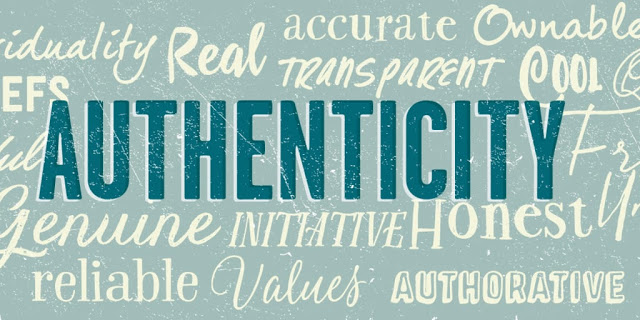
Jan 28, 2021 | Leadership, Personal Brand, Strategy
 Remember the days when we could physically gather for meetings, programs, and events at work? I find myself longing for it as we’re about to “lap ourselves,” approaching month #11 in the COVID era.
Remember the days when we could physically gather for meetings, programs, and events at work? I find myself longing for it as we’re about to “lap ourselves,” approaching month #11 in the COVID era.
Today, most of us are spending half or more of our time in a virtual space with clients, team members, and other colleagues. In this reality, communicating our unique leadership brand and presence requires us to be mindful of a whole new range of factors, to get creative, and tap into new and different resources in order to effectively and compellingly convey who we are… where often our “stage” isn’t much bigger than a postage stamp.
Back when we could gather in-person, we had a more accessible and dynamic environment and range in which to present our unique “essence.” It was just easier. By merely walking into a room, you could command attention and convey presence.
It all starts with knowing your personal leadership brand.
We’re not used to thinking of ourselves as a “brand.” Thoughts of brand more often conjure up images of our favorite coffee or shoes, the car we drive or the makeup we wear (remember makeup? :0 ). But even if you’ve never thought about your own personal brand, you have one. You’re “presenting it” everywhere you go…yes, even if you’re only walking from your kitchen down the hall to your office. So, why not take a more mindful approach and really be in charge of this brand! It’s just as important in the virtual environment as it is in-person and it requires knowing what works in that setting and making it work for you.
Start defining your brand by considering these questions:
- What do I bring to the table? Think about your skills, talents, expertise, experiences.
- What is uniquely me? What sets you apart? There’s no one else on the entire planet quite like you! What do people get with you that they don’t get with anyone else?
- What is my brand promise? Think about what you deliver.
- What do I stand for? Consider your core values and what matters most to you.
- How do I want to be described? When you “leave the room,” what would others to say about you? What adjectives would they use to describe you?
Next, give thought to how you deliver your brand.
I think of delivering your brand as your presence, or executive presence – the “how” of presenting yourself. How can you present your brand most effectively to:
show up in the most impactful way,
accomplish your goals,
convey your key messages, and
achieve your aspirations?
In her book Executive Presence, Sylvia Ann Hewlett offers, “No man or woman attains a top job, lands an extraordinary deal, or develops a significant following without the combination of confidence, poise, and authenticity that convinces the rest of us we’re in the presence of someone who’s the real deal.”
In essence, Hewlett is saying you get there because you’re being purposeful and intentional about who you are and how you show up.
She lays out the key components of what comprise executive presence: gravitas, communication, and appearance. These elements help you take what’s uniquely YOU and unleash it in the world.
Gravitas
In short, gravitas is the ability to exude integrity, and confidence under the most pressing circumstances. It’s a combination of qualities that conveys you’re in charge or deserve to be.
Communication
As it relates to presence, effective communication is as much, if not more, about the “how” you communicate than the “what” you communicate.
Research shows that people pay the most attention to our nonverbal messages. In fact, up to 93% of your message is derived from how you say it.* 93%! This statistic drives home the need to pay attention to these elements of our messaging and utilize our nonverbal communication strategically for the greatest impact and connection.
“Strong communication skills are an accurate representation of whether you qualify as a leader or not,” says Hewlett. “You have a five-second shot to first engage with your audience after you meet them.” Make it count!
- Pay attention to your body language and posture
- Be human; let them see you
- Read the people in the room and adjust your way/style as needed
- Share insights through stories rather than abstract ideas.
- Focus on the technical aspects of your speech, things like reducing filler words and controlling the pitch and volume
Appearance
Lastly, Hewlett offers that your outward presence (clothing, accessories, hair, expression, etc.) shouldn’t distract people from your professional competence, but instead should emphasize it. “If it’s not adequate, you won’t hold their attention. It says, ‘I’m capable of and in control of presenting myself and, therefore, responsible to handle whatever else I am entrusted to do.’”
Hewlett highlights elements of appearance that include:
- Being polished and groomed
- Physical demeanor
- Attire that positions you for your day…or your next job
Putting it together – Your brand and presence in the virtual realm
Specifically for the virtual realm, consider these tips to help you engage and successfully present yourself:
- Position your camera where it’s at eye level and look directly at the video camera – not the people – to hold eye contact with your audience. It’s okay to look at the other faces in your video conference but do so only occasionally if you’re the one talking or presenting. Avoid camera angles that have you looking up or down in order to engage with your audience.
- Pay attention to what your camera captures beyond you. Consider a virtual meeting practice with a friend to get feedback on what your audio and visual is communicating. Rid your physical environment of clutter, ensuring that it’s neat, tidy, and free of distractions as much as possible. Avoid camera angles that show half your ceiling and that distracting light or ceiling fan! You want your audience focused on you, be sure that your face – and other elements you want to communicate – is what fills your virtual tile.
- Make your nonverbal communication work in your favor – practice good posture, avoid crossing your arms, and keep gestures to a minimum, utilizing for effect and impact to amplify your message, otherwise they can convey nervousness and anxiety.
- Maintain a steady and assured voice. Have you heard of “up talk?” This is when the voice rises at the end of a sentence…as if asking a question. A string of up talk sentences kills credibility. As your talking, speak with confidence, with the arc of your voice starting at one note, rising in pitch through the sentence, and dropping back down at the end.
- Convey a balance of confidence, competence, and authority with ease, warmth, and empathy. By nature, the virtual environment prevents us from connecting as much as we could if we were in person. It requires us to be mindful and get creative to build connection – it’s possible, it just requires more work. A few simple practices that make a big difference include: smiling, leaning in as someone speaks, nodding in agreement, using humor, staying relaxed, and asking questions of your audience that engenders ease and helps you build rapport and find common ground.
* Mehrabian, A. (1972) Nonverbal communication. Aldine-Atherton, Illinois: Chicago
 Hi, I’m Jeanie Duncan. I work with individuals and organizations as a transformation partner to help them unlock their Truth, discover authentic value, and create meaningful impact in the world. I believe when we are truly aligned with our purpose, we can live and perform at our highest potential. With over 25 years of experience as an executive, CEO, consultant, coach, and writer, I offer strategic, knowledgeable, and experienced guidance for those who are ready to take the courageous leap toward true transformation.
Hi, I’m Jeanie Duncan. I work with individuals and organizations as a transformation partner to help them unlock their Truth, discover authentic value, and create meaningful impact in the world. I believe when we are truly aligned with our purpose, we can live and perform at our highest potential. With over 25 years of experience as an executive, CEO, consultant, coach, and writer, I offer strategic, knowledgeable, and experienced guidance for those who are ready to take the courageous leap toward true transformation.

Dec 7, 2020 | Authenticity, Intention, Leadership, Personal Brand, Truth

I listened to a podcast recently featuring Seth Godin and his latest book, The Practice, where he proclaimed, “authenticity is a crock. Authenticity is overrated. Authenticity is a trap. No one wants you to be authentic.”
I’m a huge Seth Godin fan – I love his work and principles, but I completely disagree with him on this position. He professes that his position on authenticity is controversial, and I couldn’t agree more!
According to Godin, the only time in our lives when we’re truly authentic is when we’re an infant. When something doesn’t go our way, we spiral into a tantrum. Post toddler, we lose that raw, unabashed authenticity because our decisions and actions become calculated, carried out with intent and purpose (even if subconscious).
For example, you may not like something your boss does, but you’re not likely to go run screaming into their office, as that’s not likely to get you your desired result. What you do instead is weigh actions and consequences, navigate the political landscape, and moderate your behaviors. Godin considers this inauthentic – what you deep down most want to do is not what you end up doing in your actions.
“If you go see a concert,” he says “you don’t want the authentic musician. You want that musician (despite exhaustion from a 20-city road tour) to give you the best performance of their day, their week, their month. If you need surgery, you want the surgeon to ignore that they had an argument with their spouse and instead bring the best version of themselves. That’s what we want in every interaction.”
Godin continues, offering that people don’t want authenticity. What people want from you is consistency, humanity, and empathy…for you to deliver the best, most talented, skilled version of yourself. And the best way to deliver this is to do what comes naturally to you.
I read this. I hear this. And my response is, this IS authenticity – at least my definition of it.
For two weeks now, I’ve churned on Godin’s viewpoint that “authenticity is a crock.” I’ve wrangled with it internally and debated it with colleagues. Where I’ve landed is this:
- I have a deeply held belief about what authenticity is.
- To me, consistently delivering who you are IS being authentic. If humanity and empathy is core to who you are and you show up and deliver that, then you’re being authentic.
- Authenticity is being true to who you are, aligning with and living your values, and delivering on your personal brand promise day in and day out, regardless of whether or not people are watching.
- Being authentic is being the truest, realest me…the me-ist me I can be.
No, I’m not going to run into my boss’ office and throw a tantrum because something didn’t go as I had hoped. I refrain from doing this, not because I’m being inauthentic, but because my authentic self functions in a world where I’m keenly aware of rules, protocols, and the political landscape.
With this example and many more, I’ve learned about cause and effect, actions and consequences, and the culture of “this is the way we do things around here.” These lessons have saved my life, my career, and relationships. No, I won’t necessarily live out my unadulterated, unfiltered, raw self out on the street, in the boardroom, or even at my kitchen table necessarily, but it doesn’t mean that I’m not being congruent and authentic.
My clients know my skill, talent, values, and qualities. They know that when they work with me, they’re going to get these things fully and consistently. And I’m human, I can have a bad day, I can get overwhelmed and exhausted, and when these things happen, the impact can show up in my work. When it’s likely to, I name it, we adjust and adapt, change or reschedule…whatever the situation calls for. This is authenticity.
 Hi, I’m Jeanie Duncan. I work with individuals and organizations as a transformation partner to help them unlock their Truth, discover authentic value, and create meaningful impact in the world. I believe when we are truly aligned with our purpose, we can live and perform at our highest potential. With over 25 years of experience as an executive, CEO, consultant, coach, and writer, I offer strategic, knowledgeable, and experienced guidance for those who are ready to take the courageous leap toward true transformation.
Hi, I’m Jeanie Duncan. I work with individuals and organizations as a transformation partner to help them unlock their Truth, discover authentic value, and create meaningful impact in the world. I believe when we are truly aligned with our purpose, we can live and perform at our highest potential. With over 25 years of experience as an executive, CEO, consultant, coach, and writer, I offer strategic, knowledgeable, and experienced guidance for those who are ready to take the courageous leap toward true transformation.

Jul 19, 2016 | Leadership, Transition & Change

In 2011, the Meyer Foundation and CompassPoint Nonprofit Services produced a research report “Daring to Lead” that surveyed 3,000 nonprofit executive directors and revealed a forecast of significant impending workplace transitions, with 67% of executives reporting that they expect to leave their jobs over the next five years.
Today, while we see many leadership transitions occurring among the Baby Boomer population, “what was once characterized as a pipeline problem can now be described as a bottleneck, as many individuals are choosing to work beyond the traditional retirement age due to a variety of reasons, including a prolonged economic recession,” reports the William and Flora Hewlett Foundation in “Moving Arts Leadership Forward.”
This reality requires organizations to examine its greatest asset – its people, their roles, and career paths – in strategic and creative ways. Workplaces can expect a robust boomer presence through at least 2034, when the youngest boomers will turn 70. This reality impacts Gen X-ers and Millennials aspiring to executive positions, where the wait time for succession is often longer than they would like.
While there was once a question of whether there were enough capable professionals to succeed an organization, now the challenge is more focused on developing and retaining early- and mid-career professionals in an environment of limited opportunities for formal advancement.
While not alone, nonprofits as a sector have considerable challenges in addressing this leadership reality, as they:
– Tend to be small-to-medium size operations and, as a result, are not likely to have as many resources to address strategy, planning, and leadership development.
– Are often institutions with a culture of group decision making, where business gets done through committees and boards of directors – a process that can create added delays and complexity.
– Can be highly funder-dependent, and any transition – especially with an organization’s top leadership – can threaten these vital relationships and the very future of the organization itself.
– Frequently are lead by an original founder or long-time executive. Over time, the top leader and the organization itself are inextricably connected. When this leader goes away, so could the organization.
– Often do not have sufficient reserves (if any at all) to weather an economic downturn, exposing the organization to significant financial vulnerabilities. Leadership transitions and professional development of its people, if not handled properly, can further intensify this situation.
– Sometimes have boards of directors who are unprepared to handle the transition and select and support new leaders. Despite over a decade of attention to this issue, executives and boards are still reluctant to talk proactively about succession, with just 17% reporting that their organizations had a written succession plan.
We must not overlook these pivotal leadership priorities for the development opportunities that they are. Properly and proactively managed, these changes and transitions provide an organization a period to pause, reflect, regroup, and focus. It’s a unique opportunity to examine strategic direction, priorities, and chart a future course. The key is not merely to endure it, but to emerge stronger and more dynamic from it.
You may be interested in these related blog posts:
Executive Leadership Transition and Organization Preparedness
Succession Planning: Conversation Avoided
 About Jeanie Duncan: Jeanie is President of Raven Consulting Group, a business she founded that focuses on organizational change and leadership development in the nonprofit sector. She is a senior consultant for Raffa, a national firm working with nonprofit clients to lead efforts in sustainability and succession planning, executive transition and search. Additionally, Jeanie serves as adjunct faculty for the Center for Creative Leadership, a top-ranked, global provider of executive leadership education.
About Jeanie Duncan: Jeanie is President of Raven Consulting Group, a business she founded that focuses on organizational change and leadership development in the nonprofit sector. She is a senior consultant for Raffa, a national firm working with nonprofit clients to lead efforts in sustainability and succession planning, executive transition and search. Additionally, Jeanie serves as adjunct faculty for the Center for Creative Leadership, a top-ranked, global provider of executive leadership education.

Jul 10, 2016 | Succession Planning, Transition & Change

Change – sometimes surprisingly fast change – remains the one constant we can count on. Despite this, many organizations fail to prepare for the most predictable change of all…the departure of their chief executive or other key leaders. Success in leadership transitions is dependent upon readying the organization and its people for change. So, why are executive directors and boards reluctant to talk proactively about succession planning?
First of all, change is hard. In many ways, succession planning is like estate planning. People don’t like doing wills, but they know they’re important, and a real priority. Being proactive and taking advantage of advanced planning puts the executive director and board of directors in the driver’s seat to make plans and decisions in the best interest of the organization and its people, not leaving it to others or to be handled during crisis.
In examining the tendency for avoidance, it’s helpful to look at different perspectives:
Executive Director:
– If the top leader takes the subject of succession planning to the board chair, how will he or she be perceived? Is suggesting that an organization discuss leadership transition a sign of weakness? Will the board think the executive is leaving? Burned out? Less confident? Somehow less capable to effectively lead the organization? Will it plant the thought in the board’s mind that another leader would be better?
– Especially true of founders and long-time executives, there’s a great sense of pride and ownership in leading an organization. Making the decision to retire or move on to another opportunity isn’t an easy decision: “I’ve built this institution. What happens to it if I’m no longer at the helm?” Leaders who helped shape an organization often find it difficult to imagine a next step that is as compelling.
– Many hesitate to bring it up because dealing with the day-to-day work is hard enough to handle, let alone trying to plan for something often considered so future-oriented. There’s an overwhelming inclination to just wait and address the issue when it happens.
Board of Directors:
– If a member or committee of the board broaches the subject of succession planning, will it threaten the current executive director? Will the executive perceive the conversation to suggest a problem with his or her leadership?
– As a board member, one “signs up” for a specific duty. While a member may understand and respect the need for succession planning, he or she may simply not want to take on that task. “Why bring more work on myself?”
Obviously transitions raise a long list of issues that point to the complexity and difficulty of such pivotal moments. While there are no simple solutions, changes in leadership can be addressed positively and proactively and strengthen the organization as a result.
It can be helpful to examine succession planning in the broader context of executive transition management. The range of work can be short- and/or long-term planning, at a minimum ensuring that there’s an emergency plan if an executive director is suddenly unable to perform his or her duties. If an organization is lead by a founder or long-tenured director, it makes sense to have a conversation about continuity and legacy beyond the executive. And unlike a traditional search process, executive transition management helps organizations prepare for leadership succession, months, even years before the actual transition takes place, coupling the search and recruitment process with a more comprehensive range of organizational planning and leadership development services.
Despite anxiety and hesitancy in approaching the topic of succession, the positive outcomes of thoughtful conversation and transition planning far outweigh potential negative affects.
Read these other related blog posts:
Leadership Transition and Organization Preparedness
Challenges to Addressing Leadership Transition
 About Jeanie Duncan: Jeanie is President of Raven Consulting Group, a business she founded that focuses on organizational change and leadership development in the nonprofit sector. She is a senior consultant for Raffa, a national firm working with nonprofit clients to lead efforts in sustainability and succession planning, executive transition and search. Additionally, Jeanie serves as adjunct faculty for the Center for Creative Leadership, a top-ranked, global provider of executive leadership education.
About Jeanie Duncan: Jeanie is President of Raven Consulting Group, a business she founded that focuses on organizational change and leadership development in the nonprofit sector. She is a senior consultant for Raffa, a national firm working with nonprofit clients to lead efforts in sustainability and succession planning, executive transition and search. Additionally, Jeanie serves as adjunct faculty for the Center for Creative Leadership, a top-ranked, global provider of executive leadership education.

Jun 17, 2016 | Transition & Change

In 2011, the Meyer Foundation and CompassPoint Nonprofit Services produced a research report “Daring to Lead” that surveyed 3,000 nonprofit executive directors and revealed a forecast of significant impending workplace transitions, with 67% of executives reporting that they expect to leave their jobs over the next five years.
Today, while we see many leadership transitions occurring among the Baby Boomer population, “what was once characterized as a pipeline problem can now be described as a bottleneck, as many individuals are choosing to work beyond the traditional retirement age due to a variety of reasons, including a prolonged economic recession,” reports the William and Flora Hewlett Foundation in “Moving Arts Leadership Forward.”
This reality requires organizations to examine its greatest asset – its people, their roles, and career paths – in strategic and creative ways. Workplaces can expect a robust boomer presence through at least 2034, when the youngest boomers will turn 70. This reality impacts Gen X-ers and Millennials aspiring to executive positions, where the wait time for succession is often longer than they would like.
While there was once a question of whether there were enough capable professionals to succeed an organization, now the challenge is more focused on developing and retaining early- and mid-career professionals in an environment of limited opportunities for formal advancement.
Obviously transitions raise a long list of issues that point to the complexity and difficulty of such pivotal moments. While there are no simple solutions, changes in leadership can be addressed positively and proactively and strengthen the organization as a result.
– At a minimum, an organization should have an emergency transition/succession plan if an Executive Director is suddenly unable to perform his or her duties. Many boards of directors are underprepared to handle the transition and selection and support of new leaders, with just 17% reporting that their organizations have a written succession plan (per Daring to Lead 2011).
– Often, nonprofit institutions have a culture of group decision-making – a process that can be complex and create delays. A board can address this issue in its bylaws, empowering a small representative group (executive or personnel committee, for example) to act on its behalf – in situations like this and others.
– Have written job descriptions and a performance evaluation system in place for all staff. This is especially critical for the Executive Director position. Board leadership should have familiarity of the Executive’s core role and functions and how well the individual is performing against agreed upon goals.
– Institute a culture of ongoing cross training among staff, whereby individuals have a clear understanding of one another’s responsibilities – especially among the leadership team.
– If possible, an organization’s key donor relationships should be shared by the Executive Director and other members of the staff and board. This helps lessen vulnerability, share fund raising responsibility, and ensure that vital donor relationships are held with the organization and not exclusively with a particular leader.
– Nonprofit groups often do not have sufficient reserves to weather significant challenges, exposing the organization to financial vulnerabilities. Leadership transitions, if not handled properly, can intensify this situation. However, advanced planning and good management allows even the smallest organizations to build a few months’ operating reserve.
These strategies are critical to developing leaders and preparing for both short- and long-term transitions. In the case of a longer-term planned departure, these actions can be coupled with broader assessment and planning, presenting an organization with a unique opportunity to examine strategic direction, priorities, and chart a future course. The key is not merely to endure transitions, but to emerge stronger and more dynamic from it.
You may also be interested in these related blog posts:
Succession Planning: Conversation Avoided
Challenges to Addressing Leadership Transitions
 About Jeanie Duncan: Jeanie is President of Raven Consulting Group, a business she founded that focuses on organizational change and leadership development in the nonprofit sector. She is a senior consultant for Raffa, a national firm working with nonprofit clients to lead efforts in sustainability and succession planning, executive transition and search. Additionally, Jeanie serves as adjunct faculty for the Center for Creative Leadership, a top-ranked, global provider of executive leadership education.
About Jeanie Duncan: Jeanie is President of Raven Consulting Group, a business she founded that focuses on organizational change and leadership development in the nonprofit sector. She is a senior consultant for Raffa, a national firm working with nonprofit clients to lead efforts in sustainability and succession planning, executive transition and search. Additionally, Jeanie serves as adjunct faculty for the Center for Creative Leadership, a top-ranked, global provider of executive leadership education.

 Remember the days when we could physically gather for meetings, programs, and events at work? I find myself longing for it as we’re about to “lap ourselves,” approaching month #11 in the COVID era.
Remember the days when we could physically gather for meetings, programs, and events at work? I find myself longing for it as we’re about to “lap ourselves,” approaching month #11 in the COVID era. Hi, I’m Jeanie Duncan. I work with individuals and organizations as a transformation partner to help them unlock their Truth, discover authentic value, and create meaningful impact in the world. I believe when we are truly aligned with our purpose, we can live and perform at our highest potential. With over 25 years of experience as an executive, CEO, consultant, coach, and writer, I offer strategic, knowledgeable, and experienced guidance for those who are ready to take the courageous leap toward true transformation.
Hi, I’m Jeanie Duncan. I work with individuals and organizations as a transformation partner to help them unlock their Truth, discover authentic value, and create meaningful impact in the world. I believe when we are truly aligned with our purpose, we can live and perform at our highest potential. With over 25 years of experience as an executive, CEO, consultant, coach, and writer, I offer strategic, knowledgeable, and experienced guidance for those who are ready to take the courageous leap toward true transformation. 


 Hi, I’m Jeanie Duncan. I work with individuals and organizations as a transformation partner to help them unlock their Truth, discover authentic value, and create meaningful impact in the world. I believe when we are truly aligned with our purpose, we can live and perform at our highest potential. With over 25 years of experience as an executive, CEO, consultant, coach, and writer, I offer strategic, knowledgeable, and experienced guidance for those who are ready to take the courageous leap toward true transformation.
Hi, I’m Jeanie Duncan. I work with individuals and organizations as a transformation partner to help them unlock their Truth, discover authentic value, and create meaningful impact in the world. I believe when we are truly aligned with our purpose, we can live and perform at our highest potential. With over 25 years of experience as an executive, CEO, consultant, coach, and writer, I offer strategic, knowledgeable, and experienced guidance for those who are ready to take the courageous leap toward true transformation.






Recent Comments